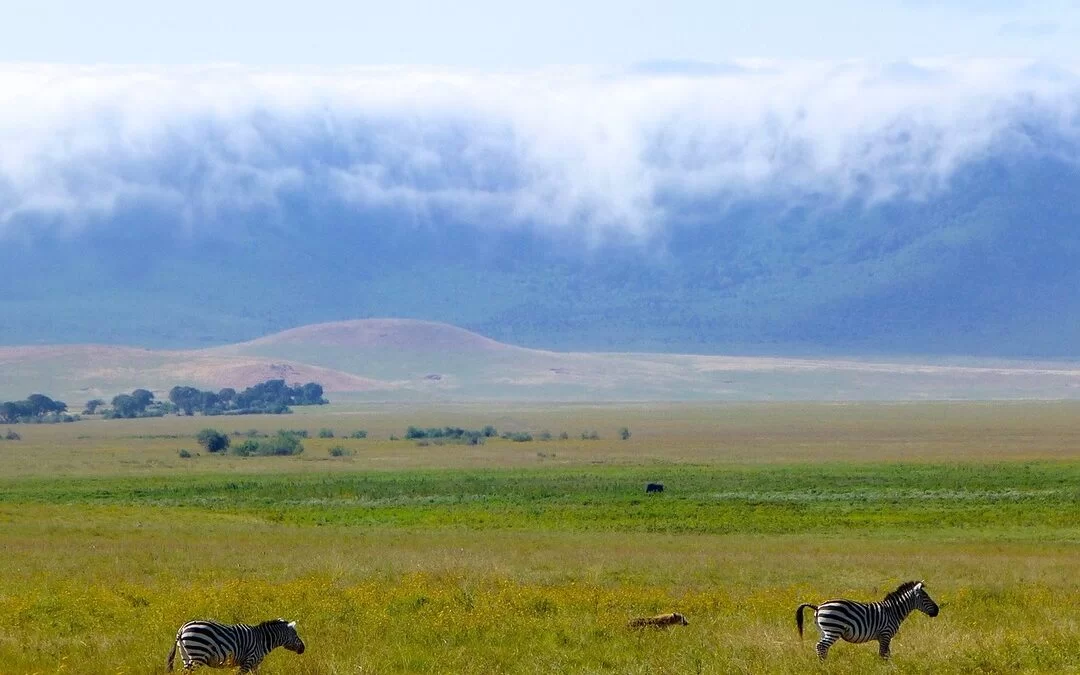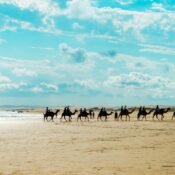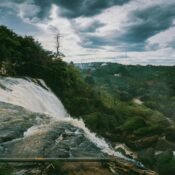
Exploring Ngorongoro Crater: Must-Know Facts for Your Safari Adventure
If you’re a geography or travel enthusiast, or you simply like to know about the world you live in, then you also probably often wonder about the marvelous natural creations of nature, and one of them is the Ngorongoro Crater in Tanzania. Though quite famous, yet often overshadowed by other places of attraction in Africa in general and Tanzania in particular, this nearly extinct volcano has been hiding plenty! (including over at least 30000 huge mammals inside it) about itself! Let us have a look at some interesting facts about this crater.
Some Interesting Facts About the Ngorongoro Crater That You Must Know:
-
How was the Ngorongoro Crater Created?
Let’s begin at the beginning! From what is known today, the Ngorongoro Crater, Tanzania is believed to have been created over 2.5 million years ago, post the inward collapse of an active volcano in the aftermath of its eruption. The Ngorongoro Crater we know today is, in many ways, the last of the remnants of this great eruption.
-
One of the Seven Natural Wonders of Africa
It is relatively easier to find out about the seven wonders of the world, but to find out about the seven wonders of Africa? Not so much! The Ngorongoro crater in Tanzania is one of Africa’s seven wonders- along with the Red Sea, the Okavango Delta, the Nile River, the Wildebeest Migration, the Sahara Desert and finally, Mount Kilimanjaro.
-
What is so unique about the Ngorongoro Crater’s Size?
Well, there isn’t just one thing that sets the Ngorongoro crater in Tanzania apart from the rest. It is the largest yet intact crater on the entire land of the earth, it is roughly about 16 to 19 kms in diameter, with walls as high as over 610 kms. The Ngorongoro Crater’s size is not the only thing that’s notable about it, but also the fact that it continues to remain the only known crater that is still intact, and has not been broken into pieces at all.
-
The Ngorongoro Crater houses thousands of Mammals
Yes, that’s right. The Ngorongoro crater is not an abandoned piece of large rock that has been deserted by all life for decades, instead it houses an entire living population of mammals. If you ever take on a Ngorongoro Crater Safari, you are more than likely to see a number of mammals, which reside in the crater.
Some popular ones include zebras, gazelles, buffaloes and the famous African wildebeest. The Ngorongoro crater is also a wonderful destination for bird watching, and also houses over 500 bird species- including the kori bustard, greater flamingo among others.
-
Ngorongoro Crater inTanzania is also home to the densest population of Predators
Given that a large number of animals survive and thrive inside the Ngorongoro Crater in Tanzania, it is a given that it comprises an entire ecosystem. Since a number of herbivores and relatively smaller animals survive inside the crater, they also act as bait for a number of ferocious carnivores to reside there as well.
This is also why the Ngorongoro Crater Safari in Africa is a hit, because tourists get an opportunity to spot animals like lions, cheetahs, leopards and jackals among others.
-
No Giraffes or Impalas are found in the Ngorongoro Crater
Though a dense population of animals of various species thrive in the Ngorongoro crater in Tanzania, there is also an unexpected absence of a few others- namely and notably- giraffes and impala. It is believed that it is owing to the lack of any open woodlands in the Crater and the absence of the tree species that are part of these animals’ natural habitat, they are not found in the Ngorongoro Crater, Tanzania.
-
The Best Destination to Spot the Big Five
One of the most fascinating facts about the Ngorongoro Crater in Tanzania is the presence of all the animals of the Big Five Group. On a Ngorongoro Safari Tour, you have a good chance of spotting lions, buffaloes, elephants, leopards as well as rhinos.
The most significant of these continue to ne the black rhinos, which are a globally endangered species.
-
Home to the most Diverse of Habitats
It is only possible that the Ngorongoro crater houses a huge number of animals if it also has a diverse habitat within. A variety of different habitats thrive within the Ngorogoro Crater in Tanzania,
There is a seasonal lake, called the Lake Magadi, Gorigor and Mandusi Swamps for hippos and elephants, the Lerai forest and the expansive grasslands that enable the living of so many animals in the crater.
-
A Globally Important Prehistoric Site
The Olduvai Gorge in the Ngorongoro Conservation Area has some of the most comprehensive history, among any other place on planet earth. Interestingly, fossils dating as far back as 3.6 million years have also been found near the Olduvai Gorge. This fact has been of particular interest to history and archeology enthusiasts.
-
Its Accessibility to the Serengeti, Tarangire and Lake Manyara
The Serengeti, or Tarangire are generally locations that make it to the top of tourists’ lists, anytime they travel a safari in Africa or Tanzania in particular. But it must be known that you can make the best out of your safari (and travel) by combining your Ngorongoro crater safari with those at Serengeti, Tarangire and Lake Mynarra.
Notably, the Kilimanjaro International Airport serves as a connection point to this network, and you must think of including aloof these places in your safari tour to make the most out of your trip!
Now that you know a little more about the Ngorongoro Crater in Tanzania, we hope you are as fascinated by it as by others, and the more popular safari destinations. So whether it is a Ngorongoro crater safari in particular that you are planning, or a larger safari tour in Africa, book your trip now!




